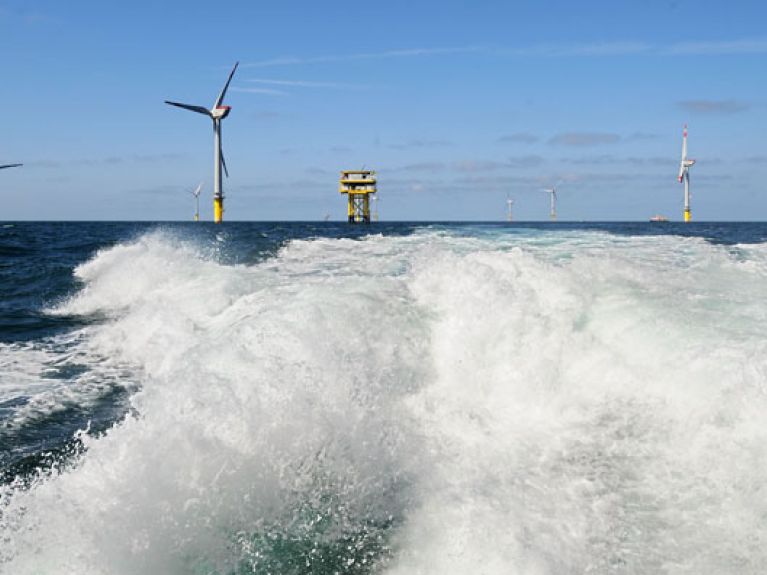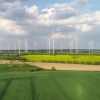The Alpha Ventus offshore wind farm
Germany has set ambitious targets for the development of renewable energy. In our series we present projects that promote the practical implementation of the energy turnaround. deutschland.de series “Energy Turnaround”, Part 4.

Wind power will play a leading role in German’s future energy system. Offshore wind farms in the North and Baltic Seas can deliver electricity in large quantities – and more reliably than turbines on land. Germany’s first offshore wind farm, Alpha Ventus, has been operating since 2010. It shows how great the potential is, but also the difficulties that still need to be overcome.
Alpha Ventus is the acclaimed pilot project. The wind farm was installed in 2008 about 45 kilometres off the North Sea island of Borkum. It consists of twelve giant wind turbines standing in a water depth of 27 to 30 metres. The challenges involved were considerable, since in Germany wind farms have to be built further from the coast than in other countries such as Belgium or the UK because the mudflats, or Wattenmeer, have protected status. The greater water depth makes the installation process more difficult and expensive. Indeed, Alpha Ventus took much longer to build than planned. Periods of bad weather with storms and high waves made it impossible to work for weeks and months at a time. The total amount invested by the utilities Eon, Vattenfall and EWE, as well as the Federal Government, rose from the planned €190 million to €250 million.
However, the first full year of power generation immediately yielded good results. The output totalled 267 gigawatt hours, 15 percent higher than expected. The availability of the wind turbines was up to 98 percent. “The Federal Government is right to rely on offshore wind technology to make the energy-system transformation work,” said overall project manager Claus Burkhardt.
The Federal Government is pursuing ambitious targets. The aim is to generate 25 gigawatts of wind power – the equivalent of 25 large conventional power plants – in the North Sea by 2030. Renewable energy’s share of electricity generation will, it is hoped, rise to at least 30 percent by 2020 and continue growing after that. Offshore wind power is an essential component of this plan. An offshore network plan for the North Sea was published in February 2013. It shows the 13 wind-farm clusters with which the wind power can be generated as well as their connections to the terrestrial grid.
www.alpha-ventus.de
www.erneuerbareenergien.de
© www.deutschland.de
